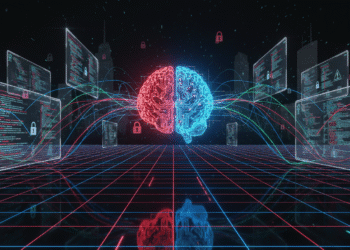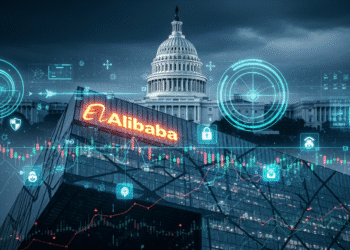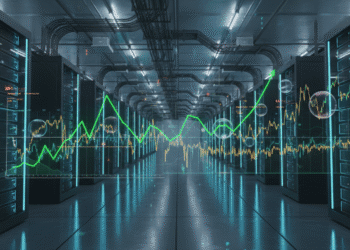Utilities predict explosive demand growth, but lawmakers demand proof before ratepayers foot the bill
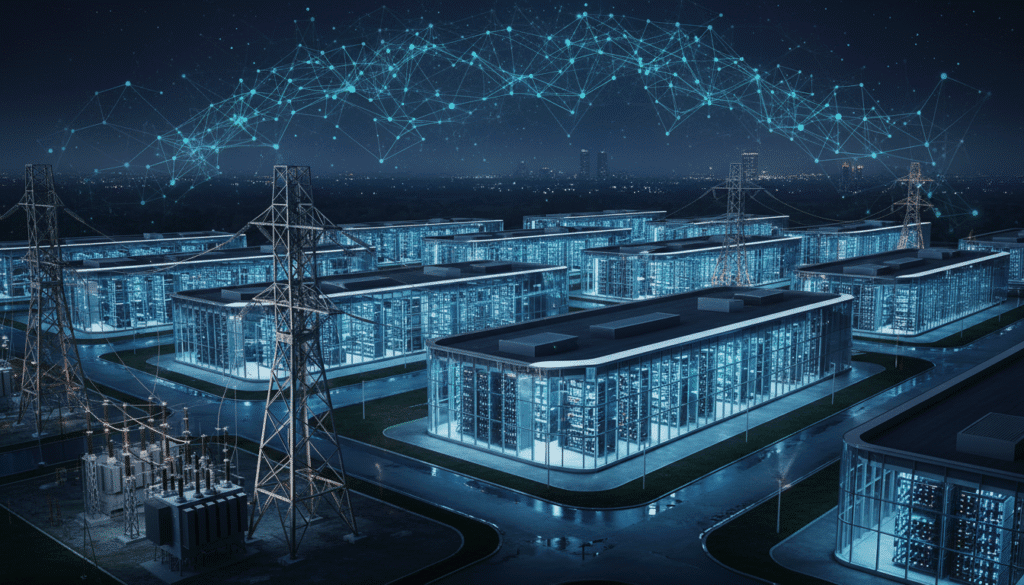
The numbers are staggering. Utilities across America are forecasting they’ll need two or three times more electricity within just a few years. The culprit? Massive new data centers powering the artificial intelligence boom that’s reshaping the global economy.
But here’s the catch: nobody knows if these projections are real.
As the AI revolution accelerates, a fierce debate is erupting across state capitals and regulatory offices. Lawmakers, consumer advocates, and energy experts are asking tough questions about utility forecasts that could trigger billions of dollars in new power plant construction costs that everyday Americans might ultimately pay.
The Forecast Frenzy
The explosive growth started with ChatGPT’s debut in late 2022. Since then, demand for AI-powered services has skyrocketed, and with it, the need for energy-hungry data centers to train and operate these systems.
PPL Electric Utilities, serving 1.5 million customers across Pennsylvania, projects that data centers will more than triple its peak electricity demand by 2030. In Texas, grid operators shocked lawmakers in 2024 by predicting peak demand could nearly double by the same year.
Similar eye-popping projections have emerged from grid operators in the Great Plains states and the mid-Atlantic region, which serves 65 million people across 13 states from New Jersey to Illinois.
Vincent Sorgi, president and CEO of PPL Corp., insists the projects “are real, they are coming fast and furious.” He told analysts that the “near-term risk of overbuilding generation simply does not exist.”
But not everyone is convinced.
The Speculation Problem
Joe Bowring, who heads Monitoring Analytics the independent market watchdog for the mid-Atlantic grid doesn’t mince words. “There’s speculation in there,” he said. “Nobody really knows. Nobody has been looking carefully enough at the forecast to know what’s speculative, what’s double-counting, what’s real, what’s not.”
The uncertainty stems from several issues plaguing the forecasting process.
First, many developers seeking grid connections don’t have solid plans. Their projects may lack clients, financing, or the operational know-how to actually build a data center. Industry insiders say the vast majority of proposed projects will never materialize.
Igal Feibush, CEO of Pennsylvania Data Center Partners, describes utilities as being in a “fire drill” trying to vet the deluge of proposals. Many project backers, he explains, are new to the concept and don’t understand what it takes to get a data center built.
Second, there’s the double-counting problem. Data center developers are submitting grid connection requests in multiple utility territories simultaneously. For competitive reasons, they won’t disclose where else they’ve applied. This means a single project could artificially inflate energy forecasts across several utilities.
There’s no standard practice across grids or utilities to vet these massive projects. That’s becoming a hot topic among industry officials scrambling for solutions.
Texas Takes the Lead
Texas moved first to address the crisis. Still haunted by the deadly 2021 winter storm blackout that killed dozens, state lawmakers weren’t taking any chances when they heard the dire forecasts.
State Senator Phil King told a hearing earlier this year that grid operators, utility regulators, and utilities themselves weren’t sure if power requests “are real or just speculative or somewhere in between.”
In June, lawmakers passed legislation requiring data center developers to disclose whether they have electricity requests elsewhere in Texas. The law also sets standards requiring developers to demonstrate substantial financial commitment to a site.
But Texas went further. The state is now considering a tough-love solution: bumping energy-hungry data centers off the grid during power emergencies.
The concept is simple. On the handful of days each year when extreme heat or cold pushes grids to their limits, utilities would disconnect large users like data centers. This would save enough electricity to avoid broad blackouts affecting residential customers.
A National Movement Emerges
Texas won’t be the last state to consider such measures, analysts predict.
“We’re going to see that kind of thing pop up everywhere,” said Michael Weber, a University of Texas engineering professor specializing in energy. “Data center flexibility will be expected, required, encouraged, mandated, whatever it is.”
The nation’s largest grid operator, PJM Interconnection, has released a proposal where new data centers may not be guaranteed electricity during power emergencies. The concept has caused a stir among power plant owners and the tech industry.
Many question PJM’s legal authority to enforce such rules. Others warn of destabilizing energy markets and scaring off investors with uncertainty and risk.
“This is particularly concerning given that states within PJM’s footprint actively compete with other U.S. regions for data center and digital infrastructure investment,” the Digital Power Network, representing Bitcoin miners and data center developers, said in written comments.
The governors of Pennsylvania, New Jersey, Illinois, and Maryland expressed concerns that the approach is too unpredictable. They suggested it should at least be accompanied by incentives for data centers to build new power sources and voluntarily reduce electricity use.
The CEO of the Southwest Power Pool, which operates the grid serving 18 million people primarily in Kansas, Oklahoma, and other Great Plains states, said expanding power-reduction programs for the biggest users is unavoidable.
Big Tech Pushes Back
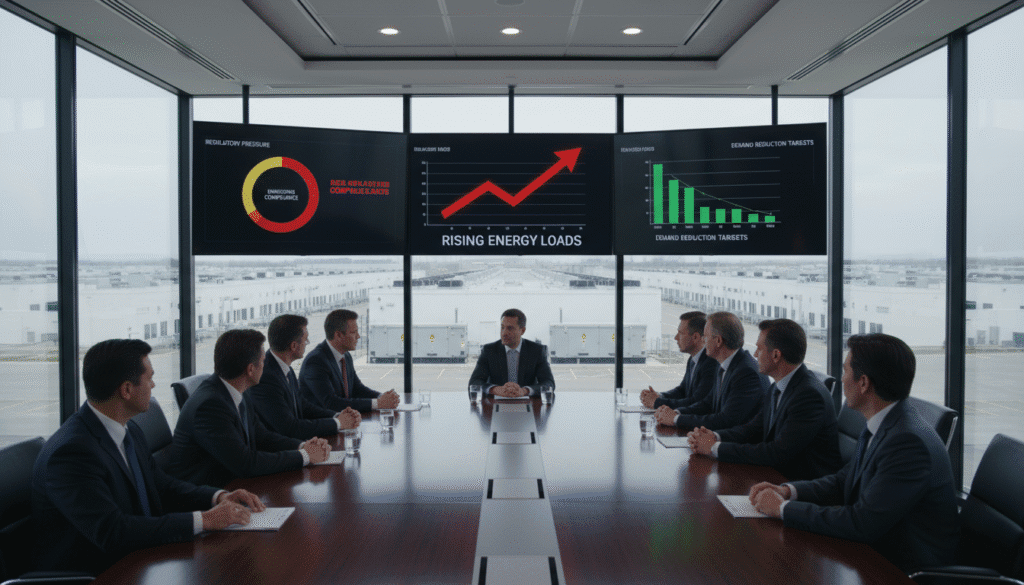
Data center operators and Big Tech companies are closely watching how these regulations develop. For them, a steady power supply is vital.
The Data Center Coalition, representing giants like Google and Meta, wants standards to be flexible. Some data centers may not be able to switch to backup power as easily or quickly as others, they argue.
Dan Diorio of the Data Center Coalition suggests grid operators should balance mandatory disconnections with financial rewards for data centers that voluntarily shut down during emergencies.
Big Tech is also working to make data centers more energy efficient. They’re installing backup generators typically diesel-fueled to ensure uninterrupted power during outages. However, operators say they hadn’t anticipated needing that backup power to help grid operators meet overall demand.
In Indiana, Google took a voluntary approach. The tech giant filed a power-supply contract with state regulators for a proposed $2 billion data center in Fort Wayne. Google agreed to reduce electricity use when the grid is stressed by delaying non-urgent tasks.
But important details are being kept from the public. Ben Inskeep of the Citizens Action Coalition, a consumer advocacy group, said that leaves it unclear how valuable the arrangement really is.
Ratepayers Already Paying the Price
While policymakers debate solutions, consumer advocates have discovered that regular Americans are already footing the bill for data center growth.
In Philadelphia, ratepayers recently absorbed an increase in their electricity bills. The utility, PECO, attributed the hike to rising wholesale electricity costs in the mid-Atlantic grid driven primarily by data center demand.
State Representative Danilo Burgos, whose district includes Philadelphia, introduced legislation to bolster state utility regulators’ authority to inspect how utilities assemble their energy demand forecasts.
“Once they make their buck, whatever company,” Burgos said, “you don’t see no empathy towards the ratepayers.”
Nationally, electricity bills are rising fast twice the rate of inflation, according to federal data. Growing evidence suggests that regular Americans’ bills are increasing to subsidize Big Tech’s gargantuan energy needs.
Analysts warn that power plant construction simply cannot keep up with data center demand growth. Something must change.
“Data center load has the potential to overwhelm the grid, and I think it is on its way to doing that,” said Joe Bowring, the mid-Atlantic grid’s market watchdog.
A New Way of Thinking About Electricity
The proposals emerging across states represent a fundamental shift in how America thinks about electricity.
Traditionally, utilities built enough capacity to meet peak demand even if that peak only occurred for a few hours per year. But with data centers potentially consuming massive amounts of power, that approach becomes prohibitively expensive.
Abe Silverman, an energy researcher at Johns Hopkins University, frames the question differently. Data centers can use all the electricity they want on most days. But taking them off the grid for those handful of hours during extreme heat or cold would mean not having to spend billions building new power plants.
“And the question is, is that worth it?” Silverman said. “Is it worth it for society to build those 10 new power plants just to serve the data centers for five hours a year? Or is there a better way to do it?”
Taking data centers offline during peak periods could save money for regular ratepayers, since power is most expensive during those times.
Some consumer advocates go further, arguing for a “bring your own generation” requirement where data centers must essentially build their own power sources.
Federal Regulators Step In
The effort to improve forecasts got a high-profile boost in September when Federal Energy Regulatory Commission member David Rosner asked the nation’s grid operators for information on how they determine whether a project is viable and will actually use the electricity it requests.
“Better data, better decision-making, better and faster decisions mean we can get all these projects, all this infrastructure built,” Rosner said in an interview.
The Data Center Coalition has urged regulators to request more information from utilities on their forecasts and develop best practices to determine the commercial viability of data center projects.
Aaron Tinjum, the coalition’s vice president of energy, calls improving forecast accuracy and transparency a “fundamental first step of really meeting this moment” of energy growth.
“Wherever we go, the question is, ‘Is the (energy) growth real? How can we be so sure?'” Tinjum said. “And we really view commercial readiness verification as one of those important kind of low-hanging opportunities for us to be adopting at this moment.”
The Edison Electric Institute, a trade association of for-profit electric utilities, said it welcomed efforts to improve demand forecasting.
The AI Bubble Question
Adding to the uncertainty, analysts are warning of a potential artificial intelligence investment bubble. Tech stock prices have ballooned on AI hype, and some fear the bubble could burst.
If that happens, many of the data center projects driving utility forecasts might evaporate overnight—leaving ratepayers stuck with the bill for unnecessary power plants and grid infrastructure.
This concern is particularly acute given that there’s no standard vetting process. PPL says its forecast includes only projects backed by contracts with financial commitments often reaching tens of millions of dollars. But other utilities may be less rigorous.
States Compete for Data Centers
Despite the challenges, many states view data centers as an economic boon. They’re competing aggressively to attract these facilities, which bring jobs and tax revenue.
This creates a delicate balancing act. States want the economic benefits but face the challenge of meeting the huge volumes of electricity data centers demand without overburdening their grids or ratepayers.
The competition also complicates efforts to impose strict requirements on data centers. States worry that tough regulations will simply drive projects to neighboring states with looser rules.
Looking Ahead
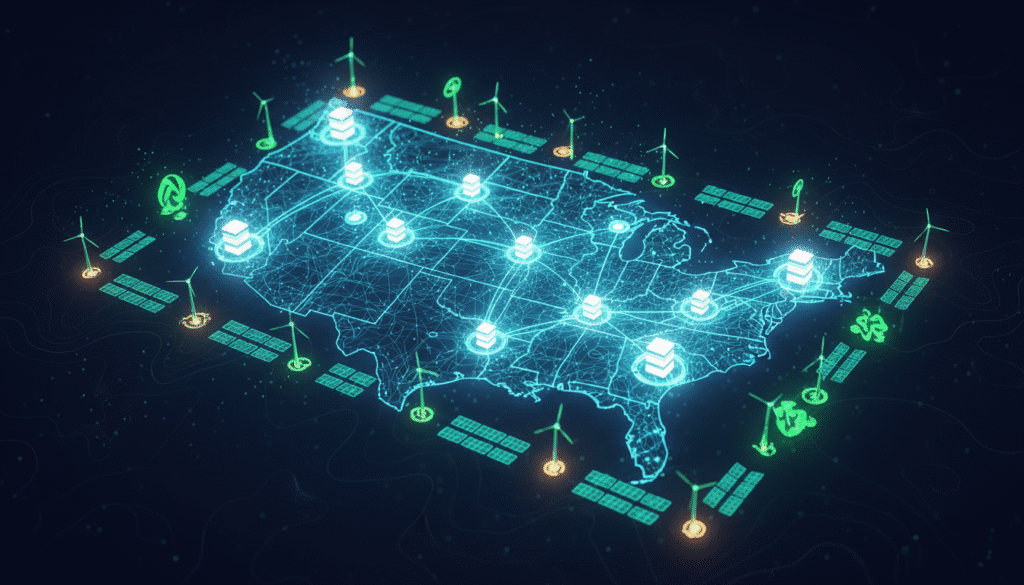
As America races against China for artificial intelligence superiority, the data center boom shows no signs of slowing. Grid operators in Texas, the Great Plains, and the mid-Atlantic region continue producing projections showing electricity demand spiking in coming years.
The question is whether utilities, regulators, and lawmakers can develop systems to separate real projects from speculation before billions in unnecessary infrastructure gets built.
For now, states are taking different approaches. Texas is requiring disclosure and financial commitments. Pennsylvania is considering stronger regulatory oversight. Grid operators are exploring ways to make data centers more flexible during emergencies.
What’s clear is that the old way of doing things won’t work. The scale and speed of data center growth is unprecedented. Traditional forecasting methods and grid management strategies weren’t designed for this moment.
As Michael Weber, the Texas energy professor, put it: data center flexibility will become expected, required, encouraged, or mandated. The only question is which approach states will choose and whether they’ll act quickly enough to protect ratepayers from footing the bill for projects that may never materialize.
The AI revolution is here. Now America’s energy infrastructure must catch up without leaving everyday consumers behind.
Sources
- Future data centers are driving up forecasts for energy demand; States want proof they’ll get built – The New Indian Express
- Big Tech faces pushback as lawmakers consider kicking energy-hungry data centers off U.S. power grids – Milwaukee Independent
- Future data centers are driving up forecasts for energy demand. States want proof they’ll get built – Associated Press


